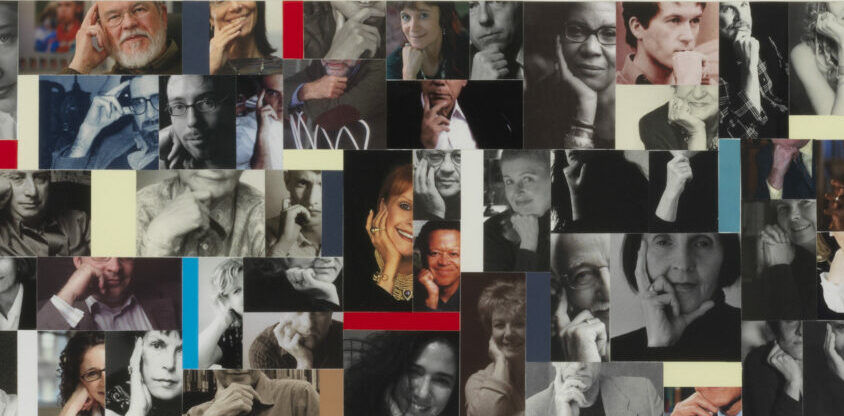Join us on Tuesday, October 8 at 6.30pm for Full Dress or Half Dress, Not Casual: Dust Jacket Elements As Collage Material an in-person BookTalk with Buzz Spector. This is part of Center for Book Arts ongoing BookTalk series—presentations related to the book arts curated and moderated by CBA Instructor Roni Gross.
The dust jacket of printed hardcover book is confirmation in itself of a formal publication. Even if the writing between those boards is comic or trivial, a hardcover edition speaks at least to the seriousness of the publishing endeavor. I have previously written about this prestige: “Books are formal presentations of text. They have titles, after all, and come jacketed, with paragraphs of introduction slipped between their covers and their pages.”
The elements most dust jackets have in common—book title, author, publishing house, blurb, fold summary, author photo—all have considerable collage potential. Beyond words and pictures, though, are aspects of the dust jacket as a text- and image-bearing artifact that are specific to it alone among other printed things. Dust jackets are typically printed on coated stock designed specifically for the wear and tear of shipping, shelving, and reading. The weight of the paper and its various laminates are recognizable, both visually and in hand. As with paperback covers, the bigger the page size the more handling wear and tear occurs to dust jackets. The rule, therefore, among publishing houses, is to use heavier dust jacket stocks for larger books.
For more than thirty years Buzz Spector has made use of dust jacket elements in the collage component of his studio practice. Author photos—in whole or in part—have been used in collages reflecting aspects of the posing repertoire for such documentation. He has composed poetry from the last lines of front and back flap plot summaries or author biographies, while other collages make use of the commonplace testimonials to the given authors’ other writings.
This BookTalk presents artworks by Spector, as well as by other contemporary book artists, showing how the visual, textual, and material properties of dust jackets make the transition from functional preservation to artistic expression. This discussion will include a history of the dust jacket, the international differences in its protocols, and the significations of its manifest chemistry for the reader, and then the viewer.

